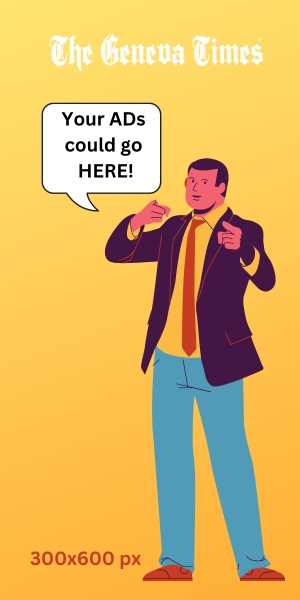Most people may not realize the powerful role social media plays in connecting the UN with individuals across the world. As I explore how the UN leverages these platforms, you’ll discover how they not only raise awareness about global issues but also mobilize support for human rights, peace, and sustainable development. Your engagement can influence policy and bring attention to critical situations, making it imperative to understand the UN’s strategies in this digital age. Together, we can amplify voices that matter in the global conversation.
The Role of Social Media in Global Communication
While traditional communication methods often limit engagement to specific demographics, social media breaks down geographical barriers, allowing for real-time interaction between the United Nations and the global community. This platform enables the dissemination of important information and fosters discussions on pressing global issues, empowering individuals and organizations to participate actively in the discourse. As I explore this role, you’ll find that social media enhances participation and strengthens the voices of diverse communities worldwide.
Enhancing Outreach and Accessibility
Above all, social media amplifies the UN’s message, ensuring it reaches a wider audience. It breaks complex policies into digestible formats, making vital information accessible to individuals who may not engage with traditional media. This accessibility empowers you by encouraging participation in diverse conversations about global challenges and solutions.
Fostering Transparency and Accountability
At the heart of social media’s influence is its ability to foster transparency and accountability in global governance. By opening channels for feedback and discussion, the United Nations invites you to scrutinize its actions and policies, cultivating trust and engagement among stakeholders.
Another significant advantage of social media is its role in promoting transparency. When the UN shares real-time updates and details about its operations, it allows you to hold the organization accountable for its commitments. This transparency enhances public trust, as you can easily scrutinize the organization’s decisions and progress. Moreover, social media platforms give individuals, civil society, and media a voice to express their concerns, which can lead to a more engaged global citizenry that champions accountability, consequently influencing policies and practices at high levels. The result is a more responsive UN that values your input and works to address global challenges with greater legitimacy.
UN Social Media Strategies
You may be surprised to learn that the United Nations has crafted a variety of social media strategies to effectively engage a global audience. By utilizing these strategies, the UN not only disseminates information but also fosters dialogue, encourages activism, and raises awareness about significant global issues. With a diverse array of platforms at their disposal, the UN tailors their messaging to best resonate with different audiences, ensuring that their mission reaches as many individuals as possible.
Content Creation and Curation
By focusing on high-quality content creation and curation, the UN is able to bring attention to pressing global matters. This approach involves producing original articles, graphics, videos, and infographics that inform the public and promote a deeper understanding of key initiatives. By curating relevant content from various sources, the UN ensures that it remains a trusted and reliable voice on global issues, encouraging engagement and dialogue among its audience.
Platform-Specific Engagement Techniques
Creation of engagement techniques tailored to specific platforms is vital for maximizing the impact of the UN’s social media presence. Each platform has a unique user base and culture, which the UN adeptly navigates to elevate its messaging.
The UN employs various techniques such as interactive polls on Twitter to gauge public opinion, live Q&A sessions on Instagram to foster real-time dialogue, and eye-catching video content on TikTok to engage younger audiences. By utilizing platform-specific strategies, the UN not only increases reach but also enhances user engagement and creates a sense of community around its initiatives. These methods are imperative for driving social change and fostering a global conversation about key issues.
Case Studies of Successful Campaigns
Clearly, the UN has executed several notable campaigns that leverage social media’s potential for global outreach:
- UNICEF’s #ENDviolence campaign reached over 60 million people in six months, raising awareness about violence against children worldwide.
- The World Food Programme (WFP) utilized Facebook to inform 17 million users about hunger crises, leading to a 50% increase in donations during emergencies.
- UN Women’s #HeForShe campaign gender equality hashtag was shared 1.2 million times, mobilizing over 1.4 million men for gender equality.
Engaging Youth through Digital Platforms
Platforms like Instagram, TikTok, and Twitter are instrumental in engaging the youth, making daunting global issues relatable. The UN effectively curates creative content that resonates with younger audiences, driving advocacy and participation in various initiatives such as climate action and human rights.
Crisis Response and Real-Time Engagement
With the rise of natural disasters and humanitarian crises, the UN has adapted its approach to facilitate real-time engagement through digital avenues. The UN’s ability to disseminate timely information about ongoing situations has proven invaluable in mobilizing support and resources swiftly.
Digital platforms play a vital role in providing immediate updates and information during emergencies. For instance, in the aftermath of a significant disaster, I’ve observed how the UN utilized Twitter to send out real-time alerts and coordinate with local agencies. This approach enables quick dissemination of crucial information to affected populations, enhancing their safety and resilience. During such events, I see how social media not only connects individuals but also generates emergency funds and fosters a sense of global community. In essence, I understand that the timeliness and accuracy of information shared can make a profound difference in crisis management and response.
Challenges and Limitations
After examining how the UN leverages social media, I recognize that challenges and limitations exist in this dynamic landscape. Navigating the vast and varied social media environment requires the UN to continuously adapt its strategies. Issues such as the rapid spread of misinformation, the vast diversity of global audiences, and differing social media platforms can hinder effective engagement. These challenges make it imperative for the UN to stay vigilant in their communication efforts, ensuring that they foster meaningful dialogue while overcoming obstacles inherent to the digital age.
Misinformation and Disinformation
To effectively engage the global community, the UN faces persistent threats from misinformation and disinformation. Misinformation spreads rapidly, often due to the sheer volume of content shared on platforms, making it challenging for organizations like the UN to counter false narratives. Disinformation campaigns can undermine the UN’s credibility and efficacy, necessitating a strong communication strategy to ensure that accurate information reaches the public promptly.
Balancing Global Diversity in Messaging
Balancing global diversity in messaging is another intricate challenge for the UN. The organization must craft messages that resonate with a wide variety of cultures, languages, and values, making it imperative to acknowledge and incorporate local contexts into their communications. This requires careful consideration to avoid cultural insensitivity and to promote inclusivity.
Indeed, the task of balancing global diversity in messaging is vital for the UN’s effectiveness. By recognizing the importance of local narratives and adapting content to reflect the unique needs of various communities, the UN can enhance its outreach. The inclusion of multilingual content and culturally relevant imagery fosters greater engagement and understanding, allowing the UN to connect on a deeper level with diverse audiences. This approach not only emphasizes the UN’s commitment to inclusivity but also strengthens the global conversation about imperative issues.
Measuring Impact and Effectiveness
Despite the challenges of navigating diverse platforms, the UN continually assesses the impact and effectiveness of its social media initiatives. By analyzing engagement rates, audience reach, and content interaction, I can discern which messages resonate most with the global community. This allows for real-time adjustments to strategies, ensuring that engagement is not just quantitative but also qualitative, fostering a deeper connection with the audience.
Analytics Tools and Metrics
Before delving into social media strategies, I utilize various analytics tools to track performance metrics. These tools provide insights into follower demographics, post engagement rates, and overall campaign effectiveness. By understanding which posts drive interaction or prompts discussion, I can refine content to better align with my audience’s interests and needs.
Feedback Mechanisms and Community Input
With a focus on inclusivity, the UN actively seeks feedback from the global community, ensuring that voices from all corners are heard. By implementing surveys, open comment sections, and direct engagement with followers, I can gather valuable insights that inform future campaigns. This process not only enhances my understanding of public sentiment but also fosters a sense of ownership among stakeholders.
It is crucial to create an environment where community feedback shapes content and initiatives. I invite users to share their opinions, which can lead to more relevant and impactful initiatives. This ongoing dialogue helps build trust and strengthens the relationship between the UN and its audience. Engaging with community input allows me to address urgent global issues and prioritize topics that matter most to you, ensuring that everyone feels included in the conversation.
Future Directions for UN Social Media Use
Now, as the UN continues to evolve in its approach to communication, embracing innovative strategies to engage the global community is vital. By leveraging emerging technologies and social media trends, the organization can not only enhance its outreach but also foster meaningful connections worldwide. Looking ahead, the UN’s social media use will likely focus on understanding audience dynamics while adapting to new platforms and tools for greater impact.
Emerging Technologies and Trends
By integrating cutting-edge technologies such as artificial intelligence and data analytics, the UN can tailor its social media content to resonate more effectively with diverse demographics. These advancements will enable the organization to analyze real-time engagement metrics, allowing for dynamic updates and targeted messaging that aligns with global conversations.
Strengthening Global Partnerships
An vital aspect of the UN’s future social media strategy involves strengthening partnerships with global organizations, influencers, and local communities. By collaborating with these stakeholders, the UN can amplify its message and ensure broader reach across various platforms.
Technologies, such as collaborative platforms and cross-promotion on social media, can facilitate effective partnerships, creating opportunities for sharing resources and expertise. Engaging with local influencers can also enhance trust and credibility, amplifying important initiatives. By fostering these collaborations, I believe the UN can create a more interconnected community that resonates with the shared goals of peace and sustainable development. Ultimately, these partnerships will play a key role in addressing global challenges and enhancing the efficacy of the UN’s social media campaigns.
Summing up
Now, I have explored how the UN effectively leverages social media platforms to foster global engagement and raise awareness on pressing issues. By connecting with diverse audiences, I can see how the UN not only disseminates important information but also invites your participation in discussions and initiatives. This interactive approach empowers individuals like you to contribute to meaningful change, demonstrating the power of social media to unite us in addressing global challenges. Utilizing these tools makes it clear that your voice matters in the grand dialogue of our interconnected world.



